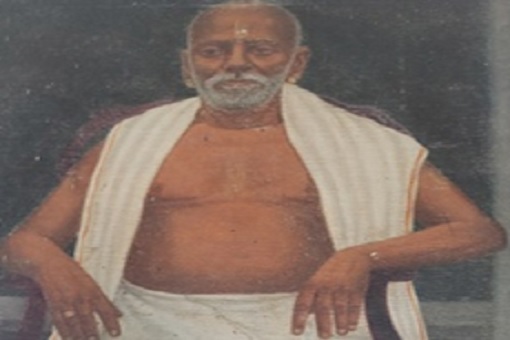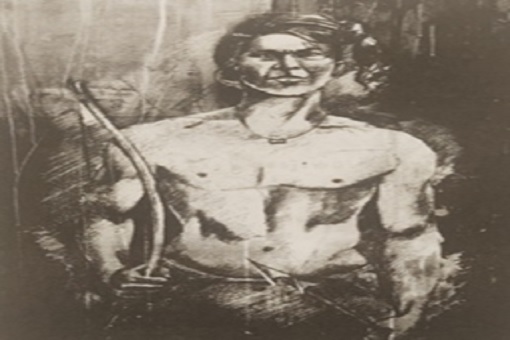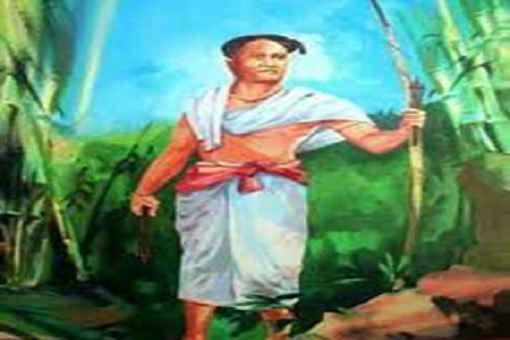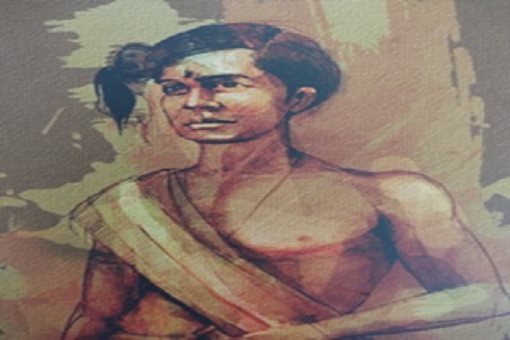People and Personalities of Wayanad District
People and Personalities of Wayanad District
The big stories often make the headlines of our historical narratives, but history is not only about the landmark events - it finds shape and character in the myriad events that led up to a flashpoint of change. An attempt to discover and document stories of people, events, and places linked to the freedom struggle of India at the micro level of the district has led to the creation of a Digital District Repository. Stories in this section can be broadly classified under - People & Personalities.
M .K. Krishna Gowder (1856-1933)
 Maniyamkode Krishna Gowder was born in 1856 at Kalpetta in Wayanad in a Jain family. He was a pioneer freedom fighter and social activist and was a recognized personality.
Maniyamkode Krishna Gowder was born in 1856 at Kalpetta in Wayanad in a Jain family. He was a pioneer freedom fighter and social activist and was a recognized personality.
Heeding the call of Gandhiji he joined in Indian National Congress and he participated in meetings of INC in Calicut as the representative of Wayanad. He organized misrabhojan (joined dining by all castes). He earned the title ‘Wayanad Gandhi’.
It was through Krisna Gownder, the message of Mahatma Gandhi, and the Indian National Congress among the people of Wayanad. In the grand meeting of INC in Calicut in 1922, Krishna Gowder was the President of that meeting. He was the representative of Malabar at the Madras Congress Meet in 1927. He also participated in the Tirunavaya Hindu Mahasammelan under Pandit Madan Mohan Malavya in 1929. He was also associated with the Home Rule Movement in Malabar. He visited Gandhiji many times and took initiative to bring Gandhiji to Wayanad in 1934.
Raman Namby
 Raman Namby was one of the prominent leaders of the Anti-Colonial Tribal Revolt of 1812 in the jungles of Wayanad. Both Kurichiya and Kuruma Tribal People participated in the revolt against the oppression of the British. He was the chief of the Kuruma Army, which organized rebellion in South Wayanad.
Raman Namby was one of the prominent leaders of the Anti-Colonial Tribal Revolt of 1812 in the jungles of Wayanad. Both Kurichiya and Kuruma Tribal People participated in the revolt against the oppression of the British. He was the chief of the Kuruma Army, which organized rebellion in South Wayanad.
He was the tribal chief of Kuruma tribal families in Kurichiyad. Usually ‘Namby’ was the traditional name given to the head of Kuruma tribal settlements in Wayanad. Raman Namby was very proficient in the traditional martial art called Kolpayattu. He organized Kurumas and formed a battalion of Kuruma army with martial training and traditional weapons with bows, arrows, spears, etc.
The retaliatory attitude of the British after the Pazhassi struggles made the life of Kurumars very miserable. The support of the Kurumas to the Pazhassiraja was the reason for the anti-tribal attitude of the colonial power. Heavy taxation, eviction of tribal people from their settlements, oppression, humiliation, and so on forced Kurumas to take up arms against the British. In March 1812, the rebels under Raman Namby proclaimed an open revolt at Kurichiyad in South Wayanad. Other Kuruma and Kurichiya warriors of this tribal revolt were Plakka Chandu, Ayiravittil Kontappan, Venkallot Kelu, Poorikkavittil Kanery Kunjan and Mambilattodan Yamu. They believed that Gods and oracles (Velichappads) entrusted them to end the rule of Vattathoppikkar (Europeans). They took the pledge of ending the British rule in Wayanad in the name Pulpally Murikkanmar.
Rebels under Raman Namby had prepared spearheads and arrows with iron bars collected from the bridges and military posts of the Europeans in Wayanad. The rebels met with the army at Cheengery, Pakkom, Mudramoola, Ganpathavattom, and Muttil.
On 27th April a group of rebels under Raman Namby attacked the Company soldiers, but the British army cleared rebels up to Korome near the Kuttiyady Ghat leading to Tellicherry. Similar encounters have also occurred in Poothady, Purakkady, Panamaram, and Mananthavady between the British army and rebels under Raman Namby. The British had suffered great loss in the early encounters on account of the Guerilla warfare of the rebels. So, the British under T. H. Baber brought more army from Mysore and Tellicherry to suppress the rebellion.
The chief leader of the rebellion Raman Namby died after a valiant fight on 1st May 1812 in one of the final ambushes near the border of Coorg in North Wayanad. After the death of this tribal leader, the British exhibited great disrespect to his dead body. A British army officer cut down his head and his head was exhibited in front of his small child. But the son of that valiant fighter, who was captured by the army earlier expressed great fortitude with perfect silence.
Thalakkal Chandu
 Thalakkal Chandu (also known as Thalakkara Chandu) was the tribal chief of Kerala Varma Pazhassiraja of Kottayam royal dynasty. He was the head of the Kurichiya army in Wayanad, which fought against the British from 1979 to 1805. He was a member of Karkkottil Kurichiya Tharavad (joint family) in Thondernad Amsam in Kunjome near Mananthavady. This Kurichiya Tharavad had a close connection with the pro- Pazhassi Edachana Nair family. The Kurichiya tribal people have settled agriculturists, who engaged in extensive paddy cultivation in Wayanad.
Thalakkal Chandu (also known as Thalakkara Chandu) was the tribal chief of Kerala Varma Pazhassiraja of Kottayam royal dynasty. He was the head of the Kurichiya army in Wayanad, which fought against the British from 1979 to 1805. He was a member of Karkkottil Kurichiya Tharavad (joint family) in Thondernad Amsam in Kunjome near Mananthavady. This Kurichiya Tharavad had a close connection with the pro- Pazhassi Edachana Nair family. The Kurichiya tribal people have settled agriculturists, who engaged in extensive paddy cultivation in Wayanad.
The Revenue Settlement of the Principal Collector of Malabar, Major William Macleod in 1802 was a great blow to the farmers of Malabar, especially the tribal farmers in the hilly terrains of Wayanad. On the basis of the unscientific revenue survey by corrupt officers. The taxation of each individual increased to 20 percent in gold fanatics and the Government’s tax share of rice production increased to 35 to 40 percent. The British police and revenue officers frequently raided the houses of Kurichiya tribals to capture paddy. The tribal people were suppressed and humiliated by British officers. Due to this reason, the Kurichiya tribal people under Thalakkal Chandu attacked the Military Camp British at Panamaram in Wayanad on the night of 11th October 1802.
Under the leadership of Kurichiya leader Thalakkal Chandu, around 150 Kurichiya militiamen on 11th October 1802 with bows and arrows attacked the British military camp in. The army detachment stationed at Panamarm fort was the First Battalion of the 4th Bombay Infantry under Captain Dickenson and Lieutenant Maxwell. They were 70 soldiers engaged in the suppression of the Pazhassi rebellion. In the attack of Kurichiyas, all 70 army men including Captain Dickenson and Lieutenant Maxwell were killed. After the attack, the rebels seized 112 muskets, 6 boxes of ammunition, and Rs. 6000 from the military post. All the buildings of the camp were destroyed and the Kurichyas burned the cantonment at Panamaram after their raid. In the attack, five Kurichiyas were killed and 10 of them were injured. This attack and defeat had created great embarrassment for the British administration in South India.
British army captured the Kurichiya leader Thalakkal Chandu after a fierce battle on 14th November 1805. The British had great wrath towards Thalakkal Chandu as he was the leader of the Panama military post-attack in 1802. As a sign of retaliation, he was brought to the same Panamaram fort after overnight cruel torture and publically executed on 15 November 1805.
Edachana Kungan Nair
 Edachana Kungan Nair was the commander of the Nair Army of Kerala Varma Pazhassiraja in Wayanad from 1797 to 1805. The members of the Edachana Nair family were the great supporters of Pazhassiraja in Wayanad and this family sacrificed the life of its five members in this struggle.
Edachana Kungan Nair was the commander of the Nair Army of Kerala Varma Pazhassiraja in Wayanad from 1797 to 1805. The members of the Edachana Nair family were the great supporters of Pazhassiraja in Wayanad and this family sacrificed the life of its five members in this struggle.
Among them, the pivotal supporter of Pazhassiraja was Edachena Kungan Nair. He was the backbone of the attack on the British Military Camp at Panamaram. on 11 October 1802. Immediately after this incident, Edachana Kungan made his famous proclamation from Pulpally temple to the people of Wayanad to take up arms against British colonial oppression in 1802. In repose to his call about 3000 men mainly Kurichiyas and Kurumars assembled in the temple with their arms. These men were divided into different groups and assigned to various places in Wayanad for the resistance. A Contingent of 500 people has been sent to Valliyurkave temple in North Wayanad to deal with the army of the Company. Again in October 1805, the rebels chiefly Kurichiyas and Kurumas assembled at Pulpally Murikkanmar temple under Pazhassiraja and Edachana Kungan. The Kurumas have positioned with arms from Kurichiyat to Pakkom and Pulpally for a final attack in response to the second proclamation.
Source :
- William Logan, Malabar Manual Vol. I, New Delhi, 2000, p. 540
- Azadi Ka Amrit Mahotsav
Last Modified : 8/31/2023
This topic Provides information about Personalitie...
This topic provides information about People and P...
Provides information related to People and Person...
This topic provides information about People and P...
